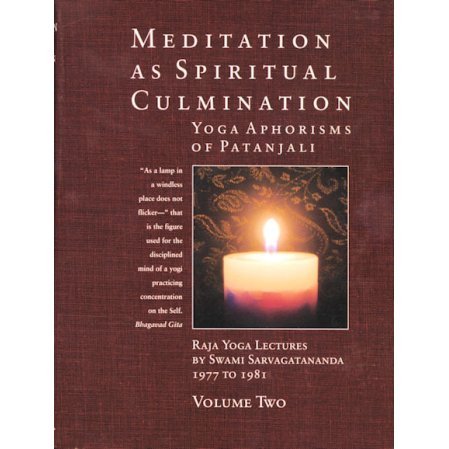A collection of the transcripts of 132 Raja Yoga lectures given by Swami Sarvagatananda on the Yoga Aphorisms of Patanjali.
- 1611 pages, 2 huge and heavy Indian hardbacks
- 81-7505-435-2 (2 VOLUME SET)
- DescriptionDetails
- Reviews
One of his students writes in the preface:
"About thirty of us, college students, professors, office workers and retirees had the good fortune to participate in these classes. It was a character transforming experience for us. We learned that Raja Yoga deals primarily with the mind and its control. But this control cannot be attained without leading a pure life, full of loving concern for all, and reflecting rather than reacting to negative thoughts or circumstances.
As the classes progressed, the intensity increased. We listened in fascination as the swami went deeper into the intricacies of the mind, the method of concentration and its culmination in meditation. The swami's intimate knowledge of this difficult subject enabled him to clear up all our doubts in simple yet convincing language in a question and answer session at the end of class."
Question and Answer for Lecture 12:
Q: If we all started from the truth, how did we get ourselves into this mess?
A: This question was asked of Swami Vivekananda nearly 85 years ago. He said: "The Hindu is bold enough to say 'I do not know."...There is another aspect to it. I do not know how this whole mess started, but I know how to get out of it. Shankara gives a beautiful example.
Suppose you enter a deep, dark cave, stand there, and ask, how long has this darkness been here? You cannot answer this question. But Shankara said, "I do not know how long it has been dark here, but I can tell you how to get rid of it: Bring a light. The darkness doesn't say, "I have been here for the last two billion years, I cannot go right away." That darkness goes away immediately when one strikes a match. Knowledge is like that match... I do not know the cause of this mess and how it came about, but I can get rid of it by means of Raja Yoga.
Massive Book Filled with Inspiration
There's no doubt this is a huge book filled with information. The beauty is that it's from the swami's lectures in the West explaining all you need to know about meditation and its practice. Highly recommended..
